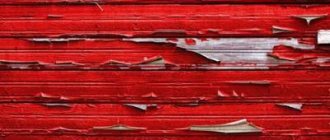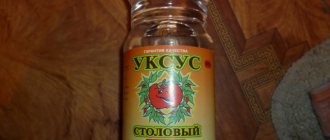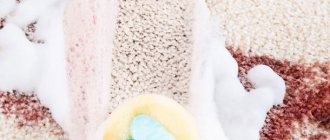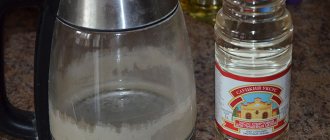The iron has become an integral part of modern life; without it it is difficult to imagine caring for clothes. Like any household electrical appliance, it requires care and compliance with instructions.
The breakdown of the iron and its poor ironing depend on this. The iron should always have purified water for steaming things and a surface free of carbon deposits. If, as a result of ironing, trouble occurs, the fabric burns, then you need to know tips on external cleaning of an electrical appliance, and how to clean the iron from burnt fabric.
Cleaning the soleplate of the iron from burnt fabric
The best way to clean an iron from burnt fabric is a special pencil. You can buy it at any supermarket or hardware department. If he is not at home, then you can use other methods. There are good folk methods.
Important! If the iron is expensive, then it is recommended not to use traditional methods. It is better to use a special cleanser. If you don’t have a special remedy at home, don’t rush. The product is sold in the store, and if it takes time to purchase it, then it is better to endure it than to hastily use the means at hand.
Cotton swabs for ears
Cotton swabs are the ideal tool for reaching deep into steam vents and freeing them of mineral deposits.
When cleaning a steam iron using this auxiliary product, you must first dip them in natural vinegar (9%), which will increase the effectiveness of combating dirt on the soles of the iron.
High-quality cleaning of a product with chopsticks involves quite painstaking work, which, however, will pay off handsomely. If cotton swabs are not suitable due to the size of the holes, you can try wrapping cotton around other (thinner) non-flexible swabs, also using vinegar.
When cleaning the iron, use latex seals if it is cold, and silicone (heat-resistant) seals if it is hot.
These safety measures unconditionally apply to the following method of cleaning dirt from the bottom of the iron.
What can be used for different types of surfaces
Before cleaning the iron from plaque, you need to carefully examine the surface: find out what material it is made of. Information about the soleplate can be found in the instructions for the electrical appliance. It is necessary to inspect the surface for scratches and dirt. Information about the material of the sole is important, since ceramic can be cleaned in one way, and Teflon in a completely different way.
Modern irons are covered with different materials and equipped with holes for steam. Any method of cleaning up pollution is unacceptable to them. These old, Soviet types of irons could endure tests and experiments on cleaning the surface using various detergents and cleaning agents. The Soviet iron is the most durable, but it is a rarity. It is worth starting from modern realities and understanding that it is already a thing of the past, and now they sell irons with more delicate coatings.
There are the following types of irons:
- With aluminum surface. It quickly becomes unusable, a lot of scratches appear on it, which means it gets dirty faster. Its advantages are that it has high thermal conductivity and heats up quickly. You can’t clean with cheap products, it’s better to use only a pencil.
- Stainless steel surface. With such an iron you need to iron it carefully, through gauze. Can be cleaned more often than aluminum. Stainless steel material resists scratches and chips.
- Ceramic or metal-ceramic coating. Customers like these irons, they provide comfortable ironing and are cheap. However, they require some maintenance during operation. Ceramic metal is fragile, although the material is stronger than Teflon. It is better to clean it not with bulk products, but with liquid products containing acid. Any scratch can cause the ceramic coating to peel off.
- Glass ceramics, Teflon, titanium. These coatings provide easy and comfortable ironing, but require careful use. They rarely leave marks on the fabric, and cauterization almost never occurs. A pencil is suitable for cleaning products, since any product can harm and damage an electrical appliance. By damaging the thin Teflon coating, you can get to the metal and then rust will likely appear. This coating requires special cleaning; special sponges are designed for it.
Preventing the formation of burning marks
To prevent the household appliance from having to be frequently scrubbed with chemical pencils, solutions or abrasives, simply do not allow burnt fabric to appear on it. Even non-stick irons require maintenance. Frequent cleaning, even using proven methods, shortens its useful life.
Helpful tips for preventing burn marks:
- read the instructions on clothing labels and observe temperature conditions;
- Iron woolen and synthetic items not directly, but through a layer of gauze or thin cotton fabric;
- When the iron has cooled down, wipe it with a dry cloth each time.
How to clean burnt synthetics with home remedies
At home, synthetics burnt to the iron are cleaned based on knowledge of the coating material of the electrical appliance. For more resistant surfaces, abrasive agents can be used; in other cases, only solutions and a special pencil are suitable. It is necessary to study in detail how to clean the iron at home from stuck fabric.
Worth paying attention! You cannot clean the “sole” of any iron with a metal brush.
The result of cleaning the iron with a brush will be a clean iron, but scratches will appear on it, it will begin to darken and leave dark spots on the fabric, and it will get dirty more often.
A burnt area on the iron is cleaned in the usual way - first you need to soak the surface, soften the crust and wash off the dirt. Therefore, certain chemicals that can do this are suitable for this procedure.
How to remove carbon deposits from an iron using traditional methods
There are many ways to remove stuck fabric from the iron. It is important to take into account not only what is currently at hand, but also the degree of contamination. For example, salt will quickly and thoroughly clean any carbon deposits, but it cannot be used on delicate surfaces, but paraffin will not harm the sole, but will not cope with serious deposits of burnt fabric.
We recommend reading: How to remove brilliant green from linoleum
How to clean an iron from burnt synthetics with salt
Salt acts as an abrasive substance, so it can only be used dry on stainless steel. For more delicate coatings, it is better to use a salt solution with the addition of other components.
The first way to clean the iron from burnt fabric:
- Place a piece of rag on the ironing board.
- Pour 1 tbsp onto the fabric. l. salt (preferably sea salt).
- Turn the iron on at maximum setting, without the steam function.
- Iron the salt, being careful not to press on the appliance.
- Turn off the iron and wipe off any remaining salt with a damp sponge.
- Allow the surface to dry.
Second cleaning method:
- Sprinkle salt between two layers of fabric.
- Iron on maximum setting without steam.
- Turn off the device and wipe the cooled sole with a soapy sponge.
- Let it dry.
Third cleaning method:
- Mix a spoonful of salt and 2 drops of detergent in hot water.
- Wet the fabric with the solution.
- Iron it at maximum power.
- Dry.
Important! The latter method is suitable for cleaning burnt fabric on surfaces made of any material.
How to remove carbon deposits from an iron with vinegar
You can clean the surface of the iron from burnt fabric using ordinary vinegar. It can be used alone or mixed with salt, which is more effective.
Cleaning the work platform:
- Place salt and vinegar in equal proportions in a container.
- Heat the mixture until the crystals are completely dissolved.
- Cool the mixture until it is comfortable for use.
- Soak a piece of cloth in it.
- Wipe the work surface.
- Remove the most stubborn burnt-on stains with a brush or sponge.
- Dry the platform with a rag.
- Turn on the electrical appliance and iron a dry piece of cloth, which you won’t mind throwing away later.
Important! The holes on the base of the device must be cleaned with a cotton swab dipped in a vinegar-salt solution.
The use of vinegar can be slightly modified:
- Pour the solution into a small container.
- Boil.
- Place the iron on top so that the entire platform is treated with steam.
- Leave the device until the carbon deposits are completely removed.
Attention! You can add a little baking soda to the vinegar. This solution will quickly soften the burnt fabric and allow you to efficiently clean the dirt.
How to clean a stuck iron with laundry soap
Laundry soap can also effectively clean the iron of carbon deposits and remove burnt-on fabric.
The sequence of actions is as follows:
- Heat the device to maximum temperature.
- Disable steam mode.
- Gently rub the platform with soap.
- After it begins to melt, the carbon deposits will begin to soften.
- After turning off the iron, you need to remove the dirt using a dry rag.
- Then wipe the work surface with a damp sponge and dry.
Important! This method is ideal for Teflon coatings.
There is another method for cleaning soles. You can wipe the iron from carbon deposits with soap crumbs. To do this you need:
- Grind laundry soap.
- Sprinkle it on a piece of cloth.
- Turn on the iron at maximum power.
- Iron the soap.
- Clean the iron on a rag by ironing.
- Repeat the procedure until the dirt is completely removed, alternating between ironing the soap and a clean rag.
To effectively clean the platform with this method, you need to take precautions to avoid allowing melted soap to come into contact with your hands.
How to clean an iron from burning with a candle
You can also wipe off stuck clothes from the iron with a regular candle. In this way, only recent contamination can be removed. Paraffin may not cope with heavy deposits.
Application of the method for cleaning the working surface of the iron:
- Wrap the candle in cotton cloth so that you can hold it without fear of dripping wax.
- Heat the iron by turning it on to maximum setting.
- Draw the resulting pencil along the working surface of the device.
Important! The iron must be held at a slight angle so that the paraffin can drain, taking with it the burnt scale.
At the end of the process, you need to wipe the sole with a damp cloth. If grains of wax remain on the iron, the device must be turned on again and the platform must be cleaned with a dry cloth. In order for paraffin particles to be completely removed, you will need to use the steam generation mode.
How to remove burnt marks from an iron with soda
In home life, soda is used in many ways. It can also clean the iron from burnt fibers. Since it acts as an abrasive substance, it cannot be used on all working surfaces of the laundry ironing device. However, metal soles will withstand the effects of dry soda.
How to clean:
- Dissolve 1 tbsp in a glass of warm water. l. soda
- Soak the fabric in the mixture.
- Spread it on the ironing board.
- Iron with a hot iron.
- Remove any remaining soda with a dry cloth.
A more effective method will be one that will rid a smooth surface of heavy carbon deposits. For cleaning you need:
- In a suitable container, mix baking soda with water to form a paste.
- Apply the mixture to the soleplate of the iron using a sponge.
- Grind.
- Remove any remaining powdery substance with a damp cloth.
Attention! To perform the procedure, the iron should be slightly warm, without burning your hands.
If you need to clean the Teflon surface with soda, then you will need to change the composition of the cleaning agent:
- Mix 1 tbsp. l. soda, 1 tbsp. l. starch, 1 tsp. dishwashing gel.
- Bring everything to the consistency of thick sour cream, gradually adding water.
- Apply the mixture to the warm platform of the iron.
- Wipe the surface with a soft cloth.
- Remove residues with a damp cloth.
Important! There should be no undissolved crystals in the mixture.
How to clean carbon deposits on an iron with toothpaste
Toothpaste can also quickly and effectively remove fumes from your iron. It dissolves particles of burnt fabric well, but only if they are fresh. Otherwise, to achieve the desired result, you will have to spend more time and effort on cleaning.
How to remove dirt:
- Heat the iron to maximum.
- Use a sharp object to remove the burnt marks (as far as the degree of contamination allows).
- Apply toothpaste (you can use a brush or sponge).
- When the iron cools, the paste will harden. You will need to slightly moisten the dishwashing sponge and use the hard part to clean the platform of the electrical appliance.
- Wash off any remaining cleaning agent with a rag and allow to dry.
Toothpaste can be replaced with powder, but in this case it can only be used on metal surfaces.
So that when using the product there are no microcracks and scratches left on the sole of the iron, it must be supplemented with a simple component - glycerin. Sequence of procedure:
- Mix tooth powder and glycerin in equal proportions.
- Heat the composition in a water bath.
- Apply the mixture to the working surface of the electrical appliance.
- Grind a little.
- Remove any remaining product with a damp sponge.
- Dry the platform.
How to remove carbon deposits from an iron with ammonia
Among the many ways to clean an iron from carbon deposits, there is also a method using ammonia. The main advantage of the product is that it can be used to clean any surface. At the same time, medical liquid is considered one of the most effective, capable of removing almost any contaminant.
Cleaning method:
- Moisten a soft rag in ammonia.
- Wipe the cooled platform.
- Using cotton swabs soaked in alcohol, remove the fumes from the holes on the sole.
- Let dry.
Attention! Vapors from ammonia are extremely harmful to the human body, so you need to work with the product in a ventilated area or wearing a medical mask.
Ammonia can be mixed with hydrogen peroxide. Sequence of steps:
- Pour 2 tbsp into a container. l. ammonia.
- Add 1 tbsp. l. peroxide.
- Soak a cotton swab in the resulting mixture.
- Rub the work surface.
- Clean the holes in the sole with a cotton swab.
Important! The iron should be unplugged during the cleaning procedure. At the same time, it should be warm, but not hot.
How to clean an iron from burnt fabric with acetone
Acetone is an aggressive substance that can quickly clean the iron of stuck fabric. But it is not recommended to use it on Teflon coating.
Pollution removal process:
- Moisten a cotton swab with acetone.
- Wipe contaminated areas of the work surface.
- Clean the product with a damp cloth.
Acetone can also be replaced with nail polish remover. If the solution does not contain the above substance, then it can be used for irons with any working surface.
It is also convenient to use white spirit instead of acetone. This product is more aggressive, but can clean even old and heavy carbon deposits. It is important to note that this solvent can damage Teflon and aluminum surfaces. But it can be used on ceramics.
How to clean an iron from burning with citric acid
You can wash the soleplate of the iron from carbon deposits using citric acid. At the same time, the ability of the product to clean delicate surfaces depends on the concentration of the composition.
First way:
- Mix citric acid and water in a container to make a paste.
- Apply the mixture to the base of the appliance using a dish sponge.
- Turn on the iron at maximum power.
- As soon as the mixture smells, turn off the electrical appliance and immediately clean it with a damp sponge.
Attention! Work can only be carried out with cotton gloves, since the sole of the iron is hot and steam is generated during operation.
The second method is suitable for delicate coatings:
- Dilute 1 tbsp in a glass of water. l. citric acid.
- Soak a piece of cloth in the resulting solution.
- Treat the surface of the device (it should be warm).
- Remove residues with a damp sponge.
Third method:
- Sprinkle a few tablespoons of citric acid onto a damp cloth.
- Turn on the iron and heat it to maximum power.
- Iron the material with citric acid.
- Remove any remaining product with a damp cloth.
Important! From time to time, the lemon juicer needs to be replaced with a new one, especially if the ironing device is too dirty. Otherwise, it will not be possible to clean the platform from burnt deposits efficiently.
How to clean the soleplate of an iron from carbon deposits with hydrogen peroxide
Regular hydrogen peroxide, which is found in every first aid kit, will help remove black deposits from the iron. This disinfectant can remove many stains, including burnt fabric. To clean the platform you will need:
- Soak a cotton swab in the liquid.
- Warm up the work surface slightly.
- Treat it with a damp disc.
- Using a cotton swab, remove dirt from the holes on the sole.
If the area with carbon deposits is too large, then you can use a more effective means to tidy up the iron. A composition with peroxide will help clean any burnt-on formation. Sequencing:
- Pour peroxide into a tray or small baking tray.
- Place an electrical appliance in it.
- Wait at least 30 minutes.
- Turn on the device and iron the rag with it to completely clean the platform of burnt deposits.
Important! This method will help clean the iron from carbon deposits inside and outside the soleplate.
What can be used for different types of surfaces
Unsuccessful experiments in cleaning the outer surface of the iron can lead to the fact that the “assistant” in ironing things becomes unusable, so you need to carefully consider the best way to clean the soleplate of the iron from adhered synthetics and other contaminants.
For all types of irons, a universal tool is a pencil. Other products may not be suitable for cleaning the “delicate” surface of an electrical appliance. What is absolutely forbidden to do?
Prohibited:
- scrape off carbon deposits with sharp objects and leave scratches;
- rub the sole with a metal brush or sandpaper;
- rub, wash the iron when it is connected to the network.
Toothpaste
Another simple method involves using regular toothpaste, regardless of its type. Due to the presence of a small amount of abrasive substances in this product, it can be used to clean ceramic and metal surfaces, but is not recommended for Teflon.
The paste is applied in several stages. First, it is applied to a slightly warmed surface. Then, using a soft cloth or brush, rub the sole with a paste until the dirt is completely removed. Remains of the product are removed with a damp cloth.
Paraffin candle
An ordinary candle will help to effectively clean the iron. It can easily cope with light stains and help remove plaque of any origin.
The candle should be wrapped in thick cotton cloth. This will be the pencil that... The iron must be heated, then gently run the candle along the sole. The handmade pencil will begin to melt and paraffin, flowing down the sole, will remove dirt.
When manipulating, you should maintain a slight angle of inclination so that the cleaning composition flows onto a previously prepared rag. After work, the sole should be cleaned with a hard, damp cloth.
If the unit is equipped with a steam function, it is necessary to clean the holes on the soleplate. To do this, pour water into the tank and use the steam boost several times. This will avoid the appearance of greasy wax stains on clothes that will be ironed in the future.
Vinegar, ammonia and hydrogen peroxide
Liquids widely used in everyday life will help deal with mild and relatively fresh stains. Therefore, if the fabric is burnt, you should find out what to do immediately.
Vinegar can be used in several ways:
- Soak a cloth in vinegar and gently rub the warm surface. This method is suitable for removing fresh, weak plaque.
- If the remains of the burnt fabric have frozen, you should generously moisten the cloth and place the contaminated equipment on it overnight. The acidic liquid will cause the dirt to peel off and soften so that it can be easily removed with a dry, stiff cloth.
You can use a citric acid solution in a similar way. To prepare it, 2-3 packets of the dietary supplement should be dissolved in 1-1.5 glasses of warm water.
Hydrogen peroxide and pungent-smelling ammonia are used in the same way: applied to a rag and wiped the contaminated area. When working, you should be vigilant; ammonia should not be applied to a hot iron; manipulations should only be carried out after it has cooled completely.











